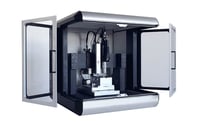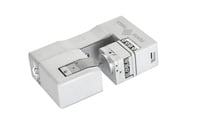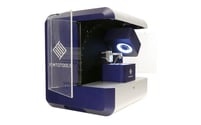Conventional tensile testing is the gold standard for measuring the yield, ultimate, and fracture strength and ductility of materials. However, while these tests provide valuable insights into the work hardening behavior and overall material properties, they average out the effects of each constituents, such as the different phases or interfaces.
To understand the relative contributions of different microstructural design features, it is important to quantify the properties of a single phase or interface. For this, micro-tensile testing is required. By scaling down these experiments, individual plastic deformation mechanisms can be investigated in great detail.
For sample preparation, focused ion beam (FIB) machining can be used to create dog-bone shaped samples with a uniform cross-section that remain attached to the original substrate. FIB-machining can also be used to fabricate a upper grip into the tip of the silicon force-sensing probe. This gripper shape enables the interlocking with the dog bone sample in order to conduct micro-tensile tests.
Application Examples
- 01 Micro-Cast Tensile Samples
- 02 Grain Boundary Engineering
- 03 Micro-Creep Analysis
FIB-Free Alternatives for Micro-tensile Testing Sample Fabrication
Focused Ion Beam (FIB) can produce samples with great control over location and geometric dimensions. However, it can be a tedious process, and the samples may retain FIB-induced damage, such as dislocation generation, gallium implantation, or amorphization. Consequently, several alternatives fabrication strategies have been proposed to produce samples free from such surface damage.
In this application example, silver wires were micro-cast using a silicon mold, then tested using in-situ micro-tension at room temperature, 200 °C, and 400 °C in displacement control. This prevented early failure during necking and yielding. Small-scale plasticity driven by dislocation flow was observed in the increased yield stress, altered work hardening rate, variability in flow stress values, and deformation through intermittent strain bursts.
| 500 nN Force resolution |
10-3 /s Strain rate in intrinsic displacement control |
Grain Boundary Engineering in Nanocrystalline Alloys
Design of materials that combine both high strength and high ductility is a major challenge for materials science. However, for numerous applications, such as in the aerospace and automotive industries, this combination is essential
In this application example, a nanocrystalline Cu-Zr alloy was developed that provides increased ductility achieved by engineering the grain boundaries to have a high degree of structural disorder. Micro-tensile testing showed that samples with Amorphous Intergranular Films (AIF) exhibited a 44% increase in tensile ductility. This improvement is attributed to AIF's ability to prevent extreme strain localization, thereby providing enhanced resistance to localized shear failure.
| 500 nN Force resolution |
10-3 /s Strain rate in intrinsic displacement control |
Thermomechanical Creep of Metallic Glasses
Metallic Glasses (MGs) have sparked interest for their superior properties, including high elastic strain limits and strength, compared to crystalline materials. Despite their potential in micromechanical applications, the effect of size on their properties is not fully understood.
In this application example, the creep behavior of metallic glass nanowires was investigated by attaching them between an FT-S Microforce Sensing Probe and a secondary substrate using Platinum-Electron Beam Induced Deposition (Pt-EBID). Creep tests were conducted at various temperatures by gradually increasing the nanowire temperature with electric current, offering insights into how temperature affects their mechanical behavior and advancing our understanding of size effects on material properties.
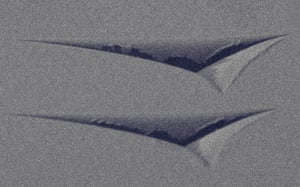
Nanoindentation
READ MORE ->
Read More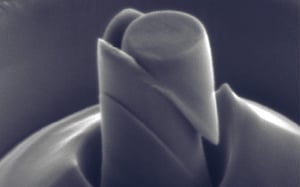
Micro-Pillar Compression
READ MORE ->
Read More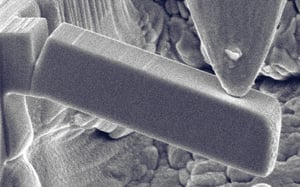
Micro-Cantilever Testing
READ MORE ->
Read More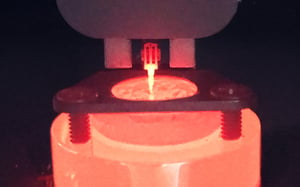
High-Temperature Testing
READ MORE ->
Read More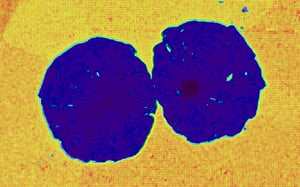
Mechanical Microscopy
READ MORE ->
Read More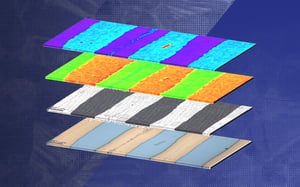
Correlative Mechanical Microscopy
READ MORE ->
Read More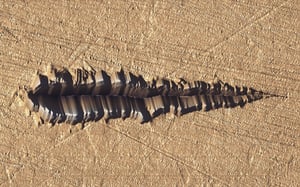
Scratch Testing
READ MORE ->
Read More
Simultaneous Mechanical Testing with STEM/EBSD
READ MORE ->
Read More
